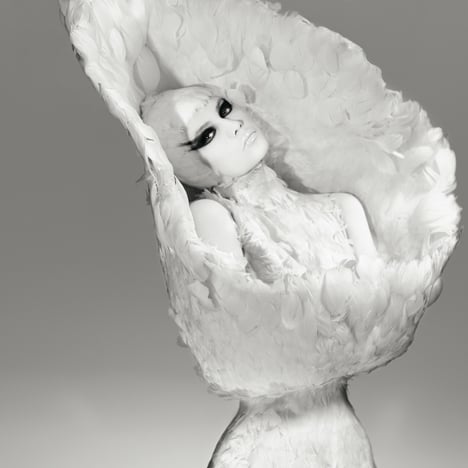
Feathers and plumage in fashion celebrated at Antwerp exhibition
Garments by Alexander McQueen, Yves Saint Laurent and Thierry Mugler feature in an exhibition of feathered fashion at Antwerp's Mode Museum.
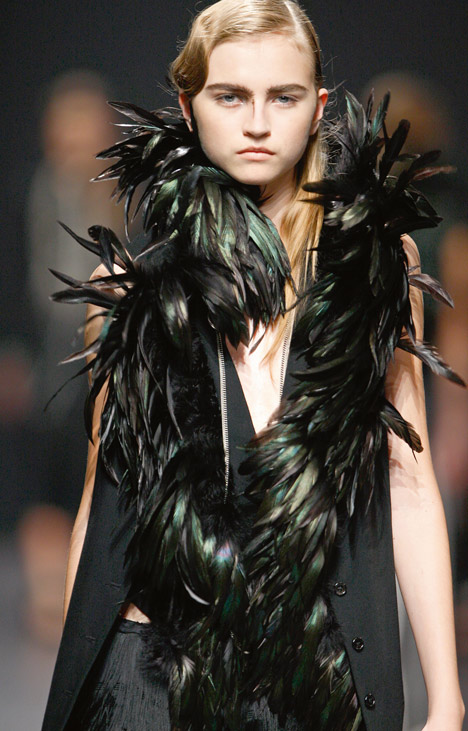
Birds of Paradise. Plumes and Feathers in Fashion at MoMu explores the application of the material through fashion history.

The exhibition is split into themed sections showcasing different textures, colours and uses of the material, with a focus on the designers who have adopted it for their apparel.
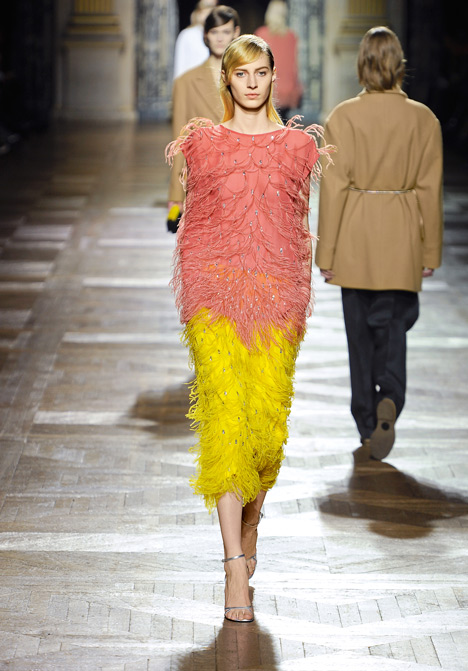
Visitors are greeted by a haute couture gown from Thierry Mugler's Spring Summer 1997 collection, which has bright feathers arranged in patterns like butterfly wings around an open back.
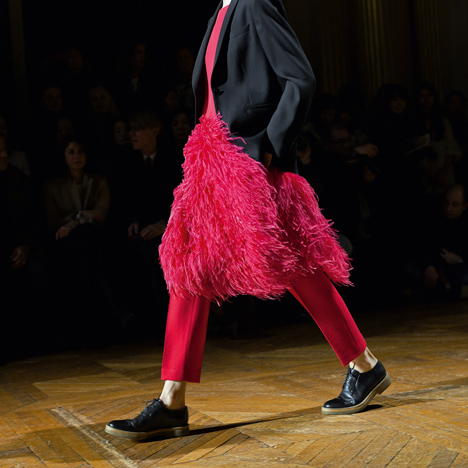
Fashion by late British designer Alexander McQueen, whose work heavily featured avian influences, is displayed and provides the poster image for the exhibition.
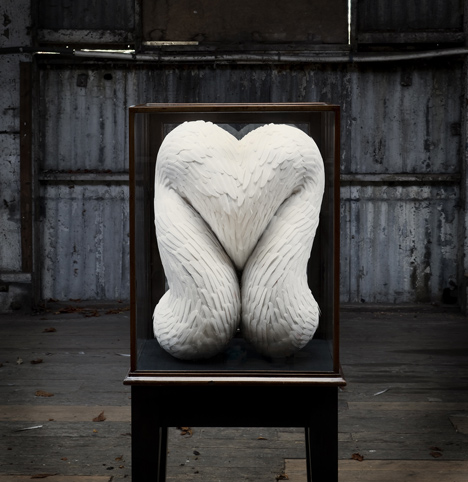
Feathers also feature prominently throughout the work of Belgian designer Ann Demeulemeester, who selected silhouettes that highlight her use of the material for the exhibition.
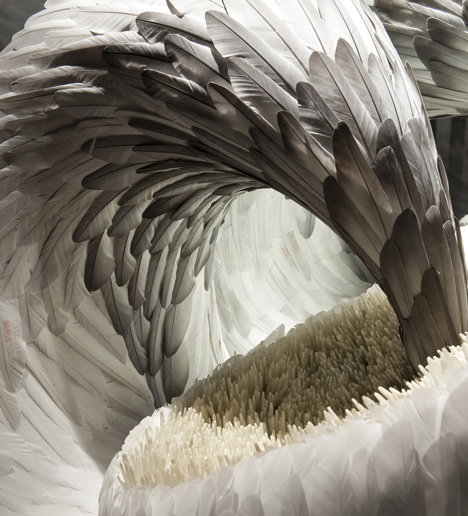
"Ever since I was a child I have had an enormous respect for feathers, and especially for pigeon feathers," she said. "To me a pigeon feather is poetry of the mundane, a form of perfection that is to be found on the streets by everyone."
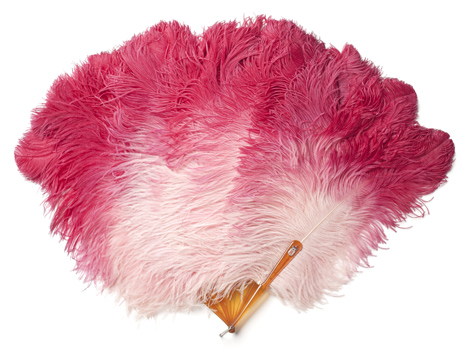
Garments are on show by twentieth-century designers Cristóbal Balenciaga and Yves Saint Laurent, who both covered dresses in feathers during the 1960s.
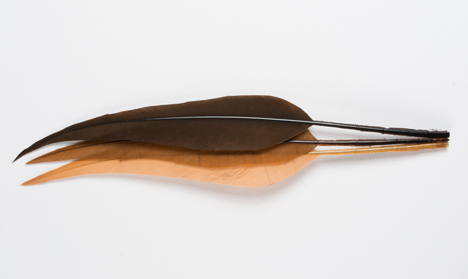
Angelic white dresses covered in fluffy down are contrasted with sinister dark garments in shiny crow feathers by a variety of designers.
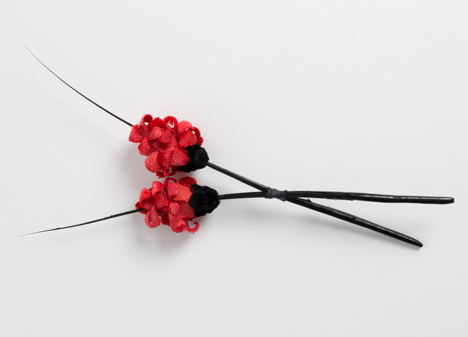
Sculptures by British artist Kate McGwire are dotted around the space. One large piece titled Gyre is made of crow feathers, often associated with bad luck.
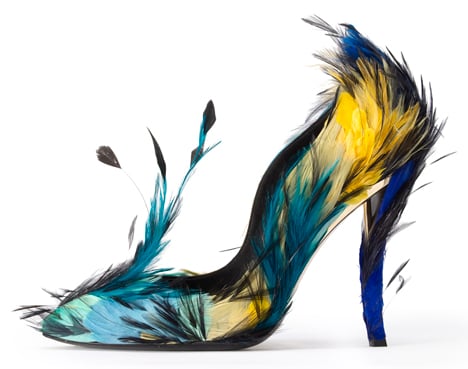
A section is dedicated to fans, which were often made from elaborate arrangements of dyed ostrich plumes for use in the courts of Europe.
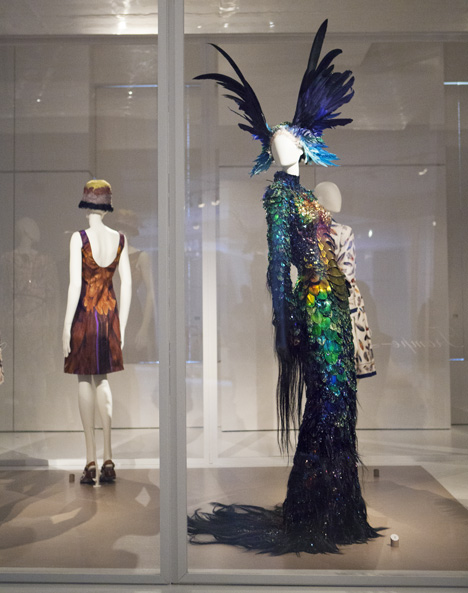
The garments and accessories are accompanied by paintings and taxidermy showing the species that different feathers come from.
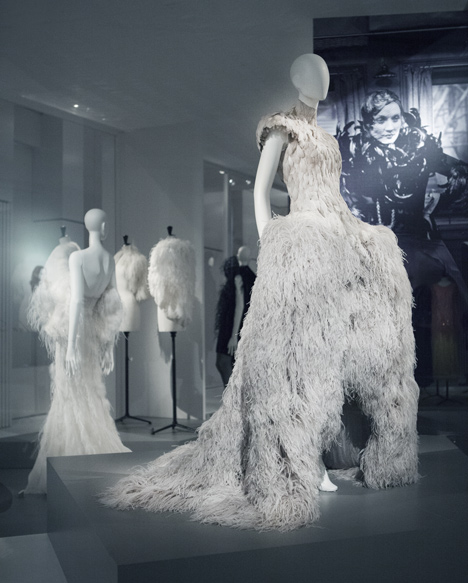
The history of the plumassier – or feather worker – dating back to seventeenth-century France is also explained.
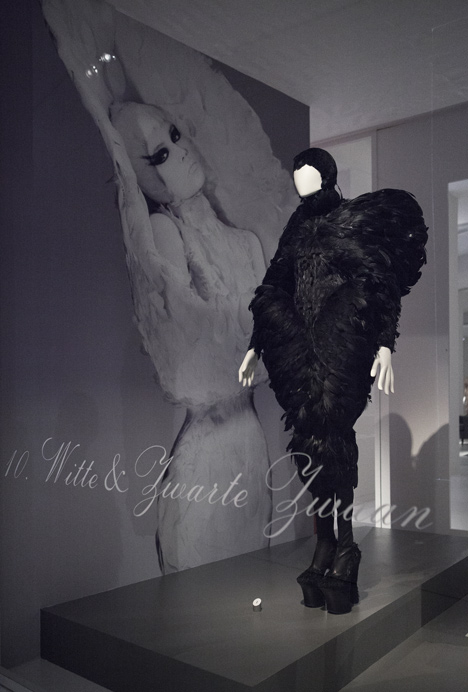
The exhibition continues until 24 August 2014.